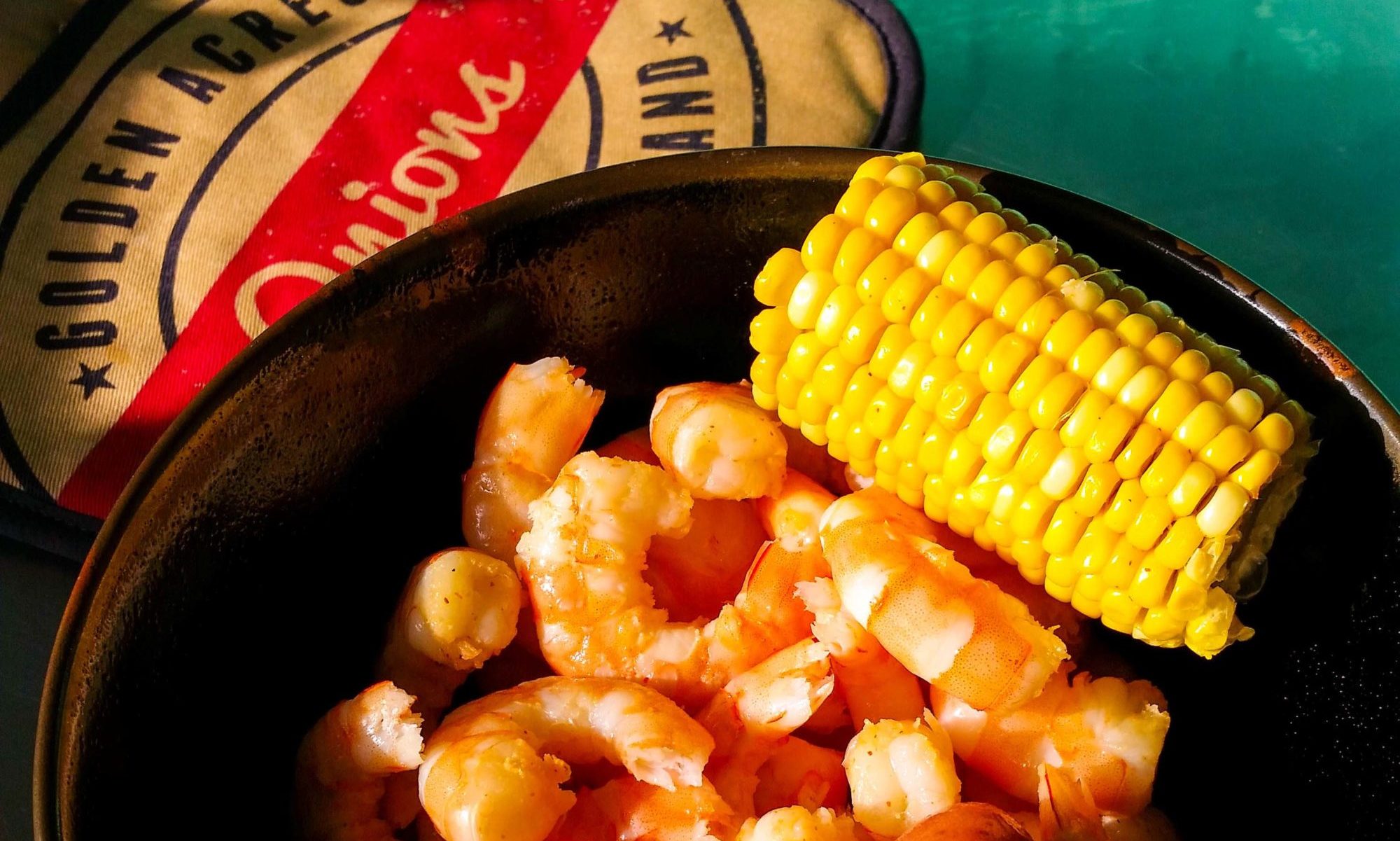
This grouping has recently become one of my favorite sides for shrimp and fish. The bok choy texturally is like having a celery/spinach plant. I always save the leafier greens for the last minute of stir fry. Everything else can hit the pan at the same time, but you might want to stagger them to fit your ideals of crispness or doneness. I usually go one of two ways with the seasoning, and that is totally influenced by what I’m thinking for the shrimp or fish that will be joining it on the plate. The Far East treatment starts with roasted garlic olive oil, soy sauce, and sesame oil. The soy brings enough salt for me, so I will follow with five spice powder and wasabi and occasionally, if I am feeling teriyaki-ish, more garlic and ginger. The Right Here Right Now treatment also starts with roasted garlic olive oil then Lea & Perrins, Tony’s and black pepper. Sometimes I will switch out the Tony’s for another creole seasoning, say Zatarain’s or Slap Ya Mama, or back way off and go basic with just some salt, butter, and white pepper. Obviously I like this dish enough to continue to play around with it and research all its possibilities.

On this occasion I paired it with some previously frozen halibut that was on sale for Prime Members at Whole Foods. It is a fish I love fresh, and the industry does flash frozen so well now that you don’t lose everything to the process. Halibut is the same sweet firm white category as fluke and flounder and sole and it responds really well to “blackening” an old cast iron technique that Prudhomme exploited all those many years ago. But he did not invent the process. When I was in grad school I wanted to write a coffee table book (i.e. physical blog) called Catching ‘Em and Cooking ‘Em and I’d already lined up the independent study to get it started when my advisor made me rewrite my thesis which sucked up what little time I would have had available for the project. I did get best thesis that year and it still sits on a shelf somewhere in Middleton and I am finally getting around to writing the food stories I wanted to write back then. That book was going to concentrate on Louisiana’s freshwater lakes. Old River, False River, Lake Verret–how to fish them and the best ways to prepare the fish, both old school and more recent techniques. The story I was going to lead with was told to me by Miss Jo, an older neighbor of my parents who lived a few camps down Island Road from them in Ventress. Miss Jo liked to come down to our pier late at night to fish for bass with plastic worms. She was quite good at it too. At any rate, she told me that her daddy would take fresh caught sac-a-lait, scale and score them, then soak them in salt water for an hour or so before dumping the water and starting over with another salt water soak. When he was ready to cook the fish, he would heat a cast iron pan until it smoked then throw the fish straight in the pan for a quick turn and burn. I had never heard of brining fish, and to tell you the truth, I’ve yet to try it that way, but the story does illustrate that “blackening” fish was around well before Prudhomme and Lagasse capitalized on our way of life.

Blackening is a very effective technique for sealing the fish quickly and keeping it moist inside. It’s not that different from cooking over a mesquite hard wood fire like I did at the Fish Company on Kinney Street in Santa Monica. We had exhibition grills and the fires were super hot and we cooked halibut and trout and sturdier fish like shark and swordfish as well. The same thing applied. Let the fish finish on the plate. You are going to get a really good sear and then the fish will keep cooking after you remove it from the heat. It does take practice to get it right, but it is well worth the effort. As to seasonings, you don’t really need to use all the cayenne and paprika that commercial blackened seasonings use. In fact, once when I was up in Maine at Christmas with my ex (before we married and she could even qualify for ex status) we got some fresh halibut from a fabulous market that was right over the water in Portland and took it back to her mother’s house to cook. I “blackened” the fish with a touch of extra virgin olive oil and a healthy dusting of salt and herbs de provence. She and her mother were macro-biotic at the time, so I’m sure there were also fresh greens involved. It might have even looked something like this dish turned out.

